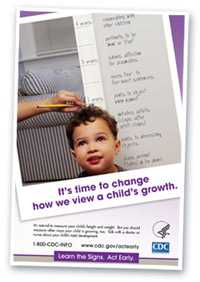What is Health Communications?
 The health communication and social marketing practices at CDC draw on the work of scholars and practitioners in a wide range of sciences and disciplines. This has been honed into a strategic communication science process that helps us confront imposing public health challenges. The process includes using multiple behavioral and social learning theories and models to advance program planning, and identifying steps to influence audience attitudes and behavior. The CDCynergy tool will help you use this process to plan, implement and evaluate your programs.
The health communication and social marketing practices at CDC draw on the work of scholars and practitioners in a wide range of sciences and disciplines. This has been honed into a strategic communication science process that helps us confront imposing public health challenges. The process includes using multiple behavioral and social learning theories and models to advance program planning, and identifying steps to influence audience attitudes and behavior. The CDCynergy tool will help you use this process to plan, implement and evaluate your programs.
What Are Health Communication & Social Marketing?
Health communication and social marketing may have some differences, but they share a common goal: creating social change by changing people's attitudes, external structures, and/or modify or eliminate certain behaviors.
Generally, a person in social marketing or health communications will create and use products, program or interventions as means to the same end: to promote health changes in individuals and communities, using strategies and tactics based on science and consumer research. Sometimes you may hear the term "Health Marketing." In this context, health marketing is a blending of multiple disciplines: the theoretical underpinnings of social marketing with the outreach communication strategies found in health communications.
CDC uses both social marketing and health communication practices, which are both overlapping and complementary, in its approach to promoting or "marketing" health to the public.
Social Marketing
Take a look at these sentences. What do the bold words have in common?
- Fasten your seat belt.
- Eat more fruit.
- Pull over to use your cell phone.
- Don't litter.
- Get a mammogram.
- Talk to your doctor
These words describe problems to be addressed by changing behavior. Research may help to describe what your audience is currently doing or thinking, which can help shape realistic goals for behavior change. Social marketing is about identifying the specific target audience segment(s), describing the benefits you will offer, and the creating interventions that will influence or support the desired behavior change.
"Social marketing is the use of marketing principles to influence human behavior in order to improve health or benefit society."
Social marketing planning requires us to understand and incorporate the "The Four 'P's of Marketing," into our program planning. Social marketing is critical because it looks at the "Four P's" and the provision of health services from the viewpoint of the consumer. The "Four P's of Marketing" are:
- PRODUCT represents the desired behavior you are asking your audience to do, and the associated benefits, tangible objects, and/or services that support behavior change.
- PRICE is the cost (financial, emotional, psychological, or time-related) of overcoming the barriers the audience faces in making the desired behavior change.
- PLACE is where the audience will perform the desired behavior, where they will access the program products and services, or where they are thinking about your issue.
- PROMOTION stands for communication messages, materials, channels, and activities that will effectively reach your audience.
Sometimes there is a fifth "P" – Policy. POLICY are the laws and regulations that influence the desired behavior, such as requiring sidewalks to make communities more walkable, or prohibiting smoking in shared public spaces.
Adapted from: CDCynergy Social Marketing Edition
Health Communication
For more than a decade CDC and the National Cancer Institute have defined health communication as:
"The study and use of communication strategies to inform and influence individual decisions that enhance health."
Health communication can take many forms, both written and verbal. Essential to the strategic planning for an effective health communication (and for social marketing as well) is some variation on these steps:
- Review background information to define the problem (What's out there?)
- Set communication objectives (What do we want to accomplish?)
- Analyze and segment target audiences (Who do we want to reach?)
- Develop and pretest message concepts (What do we want to say?)
- Select communication channels (Where do we want to say it?)
- Select, create and pretest messages and products (How do we want to say it?)
- Develop promotion plan/production (How do we get it used?)
- Implement communication strategies and conduct process evaluation (Getting it out there)
- Conduct outcome and impact evaluation (How well did we do?)
CDCynergy Lite

This tool is intended for those who have previous social marketing experience and, in particular, those who are familiar with the full edition. This CDCynergy tool is based on best practice social marketing principles, and will assist you in developing, implementing, and evaluating an effective social marketing plan.
This is a "lighter" easy-to-use version of the original CDCynergy tool and still takes you step-by-step through the process, giving you instructions on "What It Is" and "How It Is Done" with tools and templates for each step. Appendices contain useful charts, forms, and questions to help one move through the planning process.
This is an updated version based on the original Social Marketing Edition of CDCynergy. The original was developed jointly by CDC, the Academy for Educational Development and the Social Marketing National Excellence Collaborative, a component of the Turning Point Initiative supported by the Robert Wood Johnson Foundation. We received feedback about how to improve the  original tool from many of its users, took their suggestions and made the revisions for this version.
original tool from many of its users, took their suggestions and made the revisions for this version.
You may want to review the full CDC Social Marketing Edition, upon which CDCynergy Lite is based:
Also check out other versions of CDCynergy.
- Page last reviewed: May 10, 2011
- Page last updated: May 10, 2011
- Content source:
- Centers for Disease Control and Prevention
- Page maintained by: Division of Public Affairs (DPA), Office of the Associate Director for Communication (OADC)




 ShareCompartir
ShareCompartir